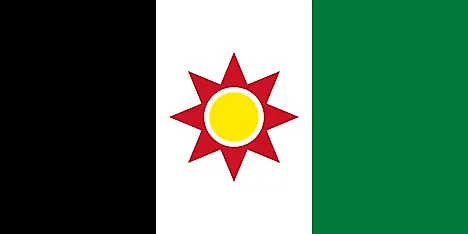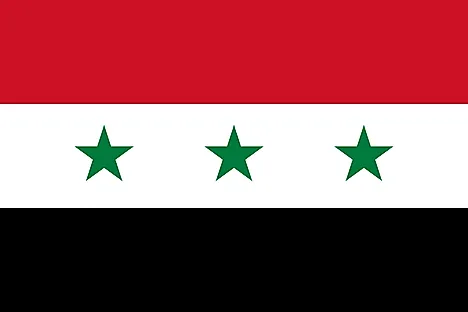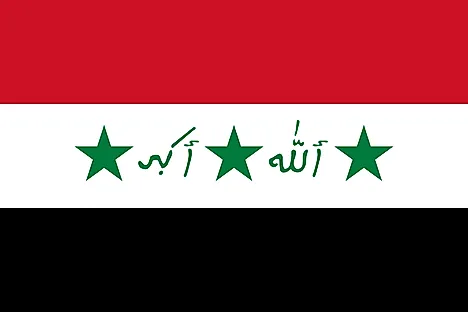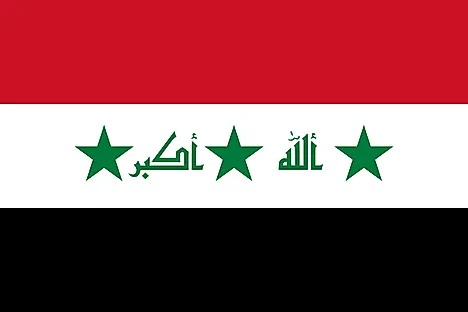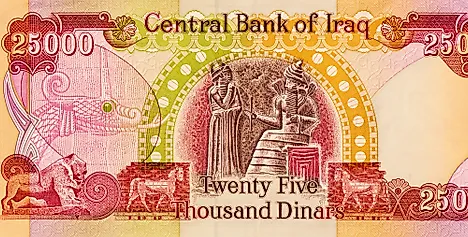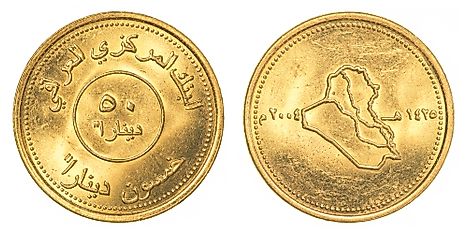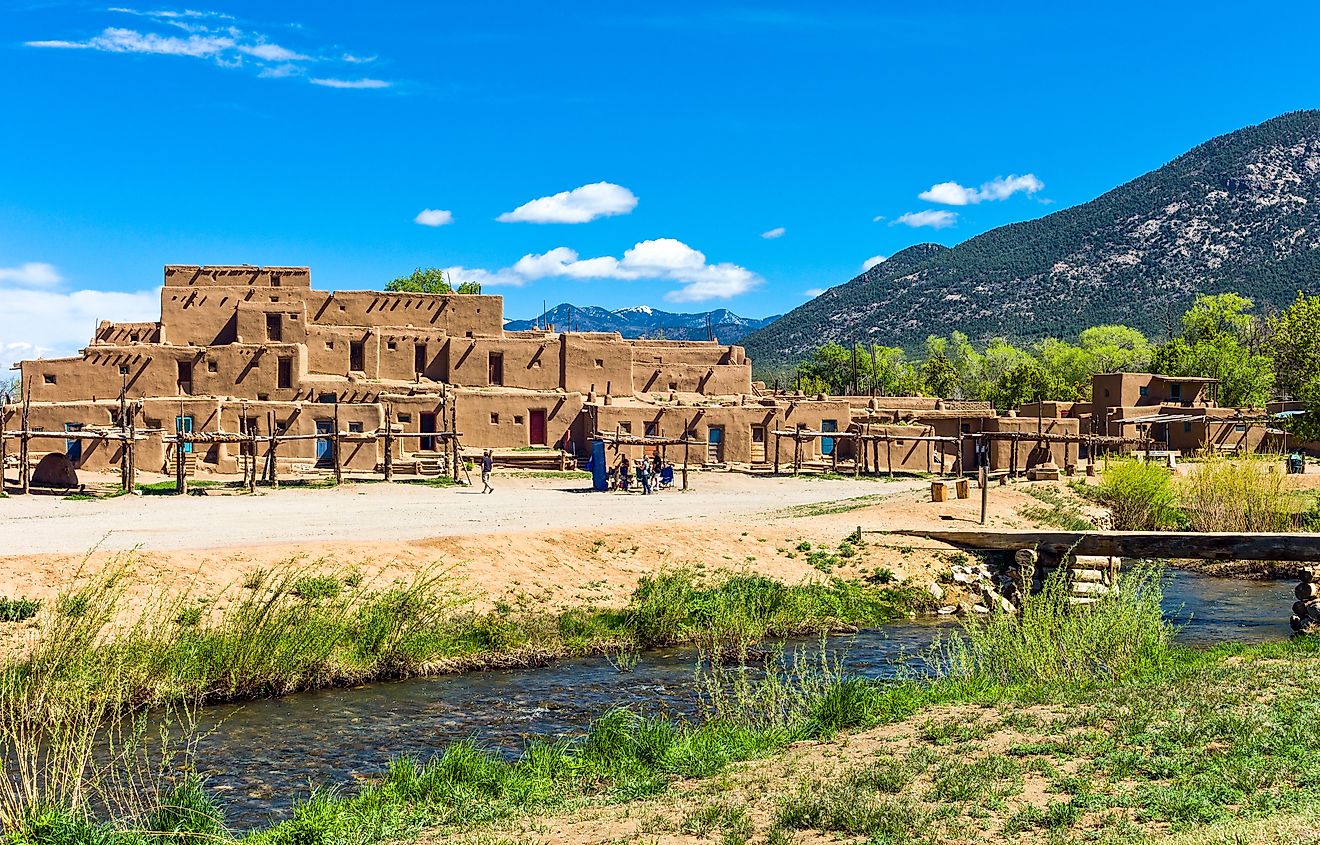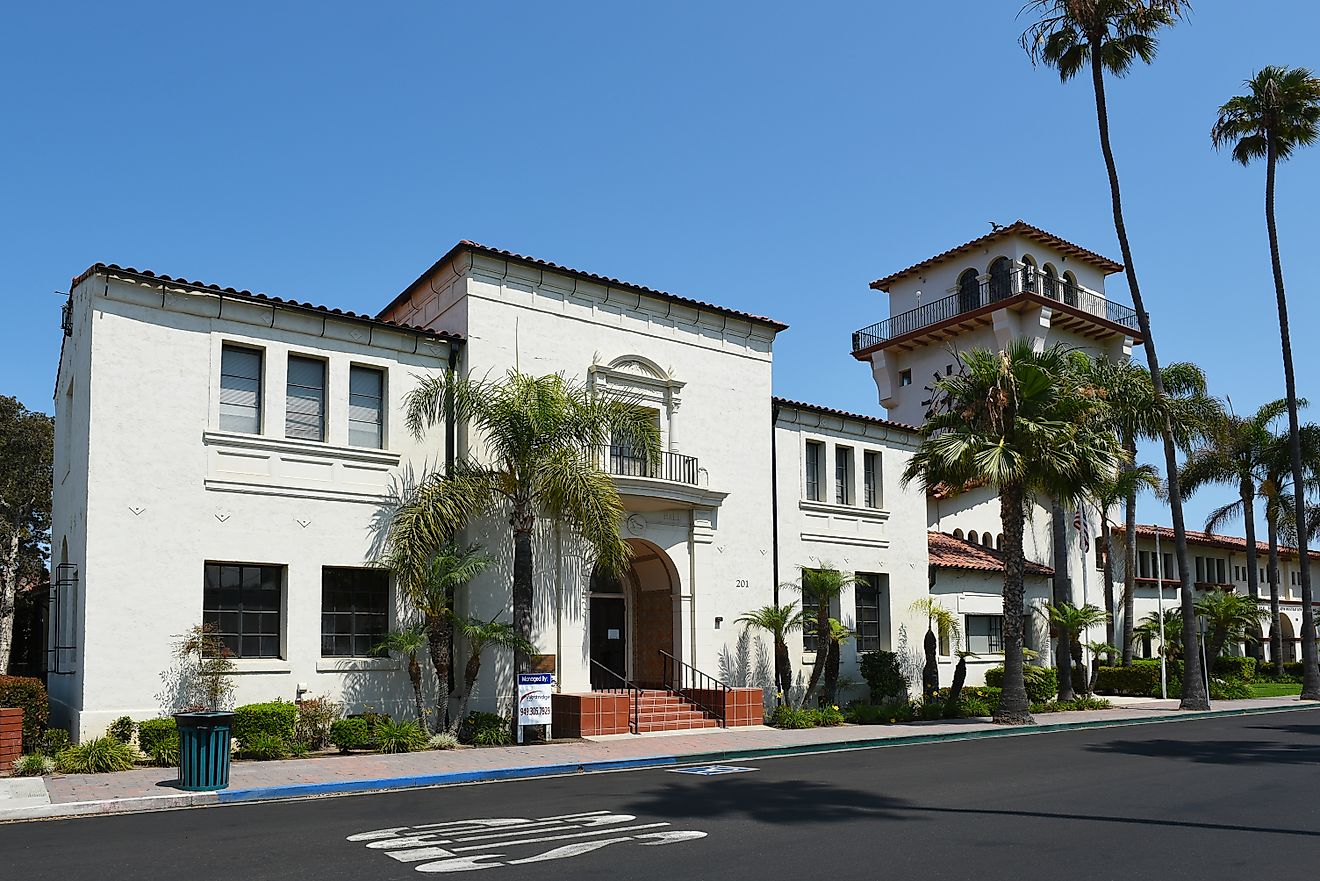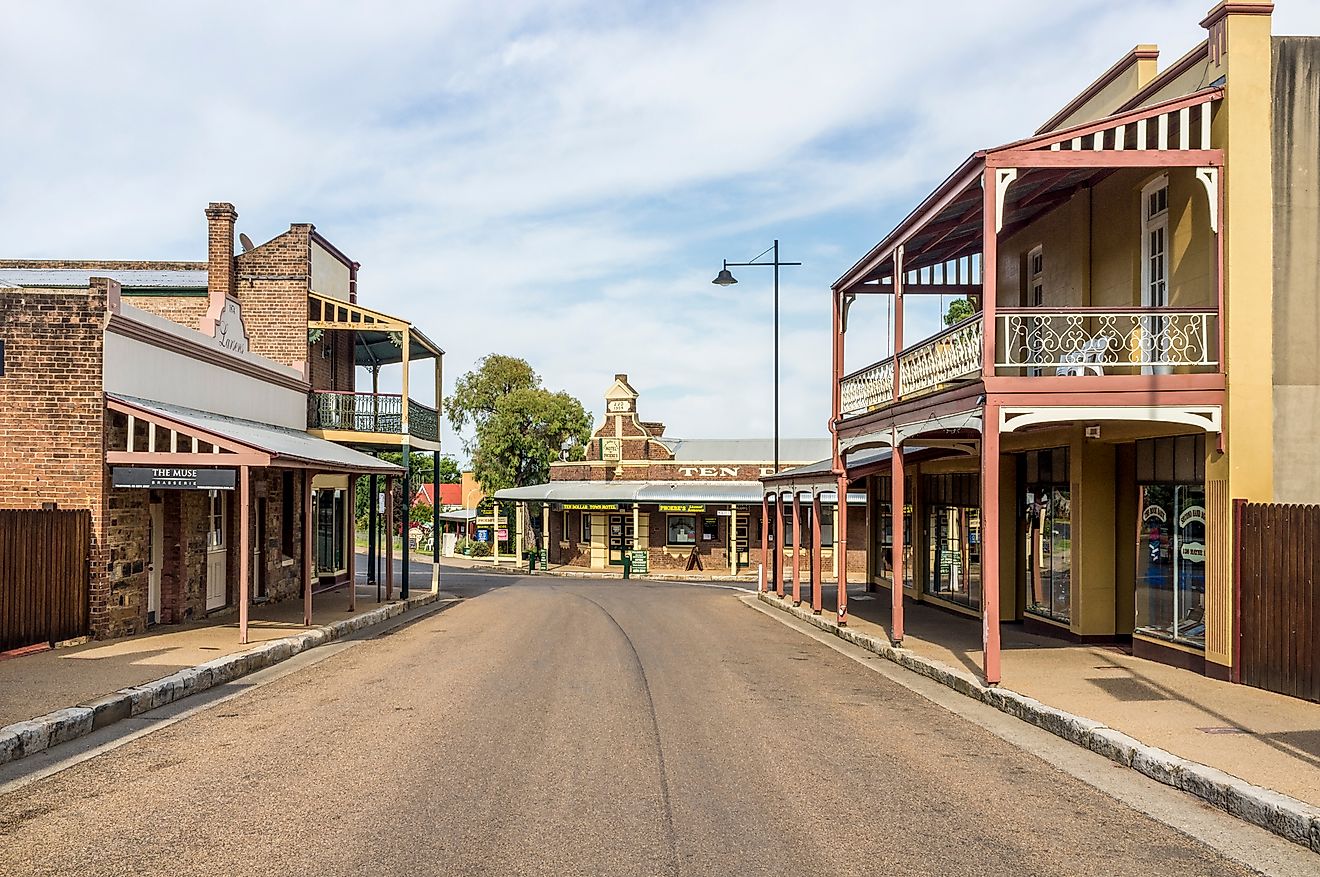Flags, Symbols, & Currencies of Iraq
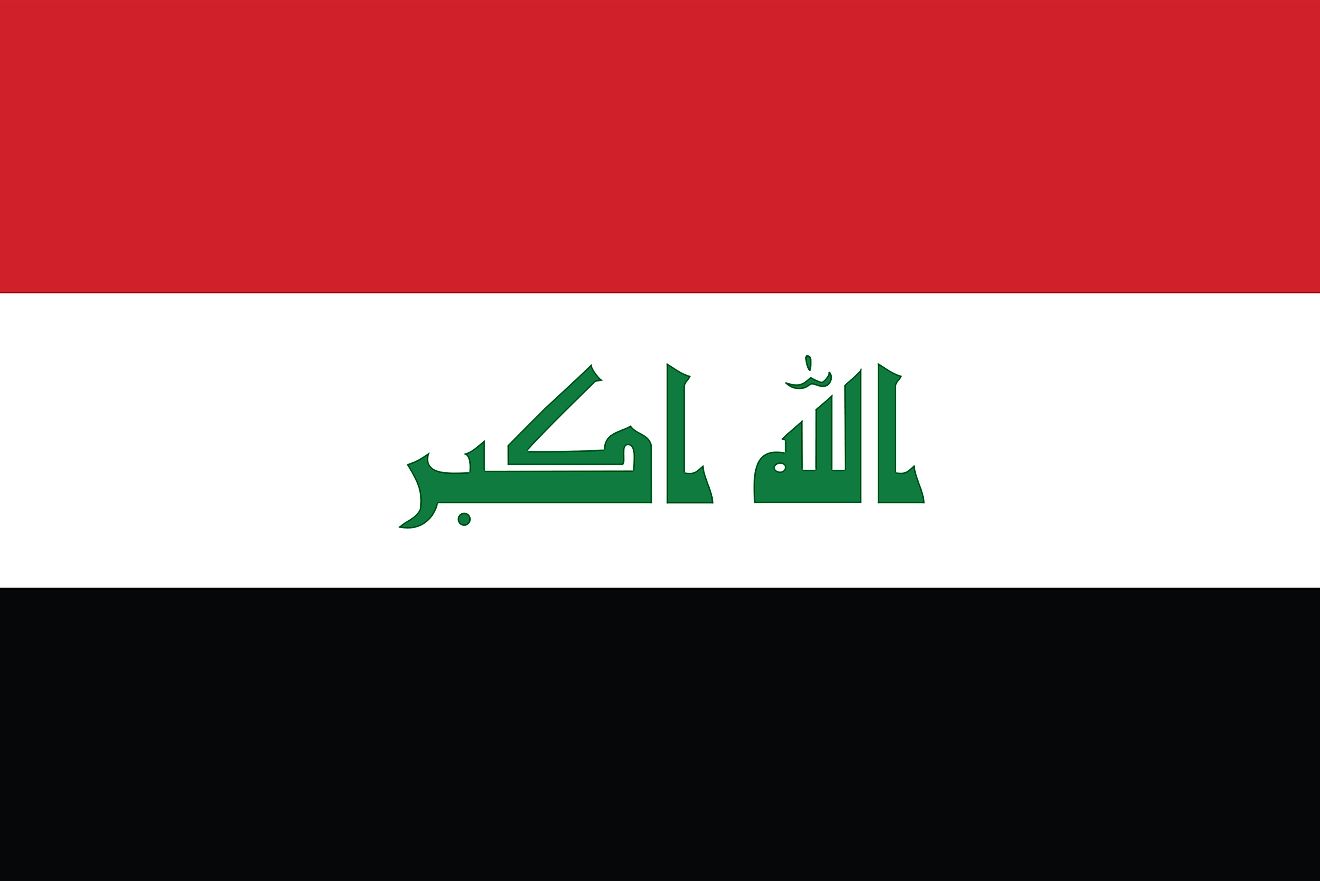
The current flag of Iraq is an interime flag adopted adopted in 2008 as the national flag until a permanent solution to the flag issue is found. This flag replaced the Saddam-regime flag and was intended to last only one year before a final decision on the flag could be made.
The current flag features three equal horizontal bands of red (top), white, and black. The Takbir (Arabic expression meaning "God is great") in green Arabic script is centered in the white band. The national flag of Iraq has a height to length proportion of 2:3. The three colors used in the flag are the Pan-Arab colors that feature in many flags of the Arab world. In addition to three colors of red, white, and black, green is also a Pan-Arab color. The different colors represented distinct Arab dynasties or eras. The band colors derive from the Arab Liberation flag and represent oppression (black), overcome through bloody struggle (red), to be replaced by a bright future (white); the Council of Representatives approved this flag in 2008 as a compromise replacement for the Ba'thist SADDAM-era flag
Subnational Flags of Iraq
The Kurds of Iraq’s Kurdistan Region have their own flag used as a symbol of their desire for independence. It is, in fact, the official flag of the region. The emblem of the golden sun at the center of the flag is its most distinct feature. The sun disk has 21 rays symbolizing rebirth/renaissance in the Kurdish religion. The flag features three bands of red, white, and green with the sun located in the middle. Red signifies the martyrdom and the struggle for independence. The green color represents the region’s greenery and spectacular landscapes. It also symbolizes life. The white color is a symbol of equality and peace.
History Of The Flag Of Iraq
Modern Iraq’s first flag was adopted in 1921. It had three horizontal bands of black, white, and green and a red triangle extending from the mast side. In 1924, the red triangle was modified into trapezoid with two seven-pointed white stars representing the two major ethnic communities of Iraq, the Kurds and the Arabs. The flag was inspired by the Arab Revolt and represented the Hashemite dynasty of Iraq. Since then, the flag of the country evolved several times. The present flag of the country has been in use since 2008.
Symbols of Iraq
National Coat of Arms of Iraq

The national coat of arms of Iraq features a black and golden eagle bearing a shield on the chest depicting the Iraqi flag. The arms' eagle is the Eagle of Saldinin and features black and golden stripe feather on the wings and middle tail feather. The eagle is looking towards the left of the viewer and holding a scroll below with the inscriptions, "al-Jumhuriya al-`Iraqiya" ("The Iraqi Republic")
National Anthem
- Anthem Title: Mawtini (My Homeland)
- Music composer: Muḥammid Flayfil
- Lyricist: Ibrāhīm Ṭūqān
- Date of Adoption: 2004
Mawtini was Palestina's national anthem until 1996 when they adopted the current national anthem. However, it was adopted as Iraqi national anthem in 2004. Interestingly, the national anthem of Iraq in the 1950s and 1960s was also titled Mawtini but was a different song altogether. The old version had no lyrics and was instrumental only. The lyrics for the current national anthem were written by Ibrāhīm Ṭūqān in 1934 and the music composed by Muḥammid Flayfil
Mawtini (Arabic)
مَوطِنِي مَوطِنِي
الجلالُ والجمالُ والسَّنَاءُ والبَهَاءُ
في رُبَاكْ في رُبَاكْ
والحياةُ والنجاةُ والهناءُ والرجاءُ
في هواكْ في هواكْ
هلْ أراكْ هلْ أراكْ
سالِماً مُنَعَّماً و غانما مكرما
سالما منعما و غانما مكرما
هلْ أراكْ في عُلاكْ
تبلُغُ السِّمَاكْ تبلغُ السِّمَاكْ
مَوطِنِي مَوطِنِي
Second verse
مَوطِنِي مَوطِنِي
الشبابُ لنْ يكِلَّ هَمُّهُ أنْ تستَقِلَّ
أو يَبيدْ أو يَبيدْ
نَستقي منَ الرَّدَى ولنْ نكونَ للعِدَى
كالعَبيدْ كالعَبيدْ
لا نُريدْ لا نُريدْ
ذُلَّنَا المُؤَبَّدا وعَيشَنَا المُنَكَّدا
ذُلَّنَا المُؤَبَّدا وعَيشَنَا المُنَكَّدا
لا نُريدْ بلْ نُعيدْ
مَجدَنا التّليدْ مَجدَنا التّليدْ
مَوطِنِي مَوطِنِي
Third verse
مَوطِنِي مَوطِنِي
الحُسَامُ و اليَرَاعُ لا الكلامُ والنزاعُ
رَمْزُنا رَمْزُنا
مَجدُنا و عهدُنا وواجبٌ منَ الوَفاء
يهُزُّنا يهُزُّنا
عِزُّنا عِزُّنا
غايةٌ تُشَرِّفُ و رايةٌ ترَفرِفُ
غايةٌ تُشَرِّفُ و رايةٌ ترَفرِفُ
يا هَنَاكْ في عُلاكْ
قاهِراً عِداكْ قاهِراً عِداكْ
مَوطِنِي مَوطِنِي
My Homeland
My homeland, my homeland,
Glory and beauty, sublimity and splendor
Are in your hills, are in your hills.
Life and deliverance, pleasure and hope
Are in your air, are in your air.
Will I see you, will I see you?
Safely comforted and victoriously honoured.
Safely comforted and victoriously honoured.
Will I see you in your eminence?
Reaching to the stars, reaching to the stars
My homeland, my homeland.
Second verse
My homeland, my homeland,
The youth will not tire
Their goal is your independence
Or they die, or they die.
We will drink from death, and will not be to our enemies
Like slaves, like slaves.
We do not want, we do not want
An eternal humiliation, nor a miserable life.
An eternal humiliation, nor a miserable life.
We do not want, but we will bring back
Our storied glory, our storied glory.
My homeland, my homeland.
Third verse
My homeland, my homeland,
The sword and the pen, not the talk nor the quarrel
Are our symbols, are our symbols.
Our glory and our covenant, and a faithful duty
Moves us, moves us.
Our glory, our glory,
Is an honourable cause, and a waving flag.
Is an honourable cause, and a waving flag.
O, behold you, in your eminence,
Victorious over your enemies, victorious over your enemies.
My homeland, my homeland!
The Currency of Iraq is the Iraqi dinar
The Iraqi dinar is the current official currency in Iraq and is abbreviated in the international money markets as IQD. The Iraqi dinar is made up of subunits known as fils, with 1 Iraqi dinar being equivalent to 1000 fils, and therefore is decimalized unlike its predecessor, the Indian rupee. The Iraqi dinar was introduced on April 1, 1932, replacing the colonial Indian rupee and was pegged at par with the British sterling pound. The Central Bank of Iraq was established in 1947 and became the primary regulatory body controlling the circulation and inflation of the Iraqi dinar which also meant that the currency’s fixed peg was converted into a hard peg. In 1949, the UK devalued the sterling pound, a development which led to the Central Bank of Iraq switching to the US dollar as the anchor currency, with the sterling pound’s prevailing cross rate. The devaluation of the US dollar in the 1970s caused the dinar to experience a dramatic increase in value where 1 USD was equivalent to 3.21 IQD.
Iraqi dinar is minted in banknotes and coins of various denominations. The coins were introduced in 1931 and 1931 in the denominations of 1, 2, 4, 10, 20, 50, and 200 fils. After the establishment of of the Republic of Iraq, other coin denominations were introduced, including 1, 5, 10, 20, 50, and 100 fils. However, coin production stopped in 1990 as a result of the Gulf War and sanctions by the international community. Banknotes are issued in several denominations, including 50, 250, 1,000, 5,000, 10,000, and 25,000 dinars
High Inflation
The Gulf War of the late 20th century had a detrimental effect on the value of the Iraqi dinar, with international sanction imposed on Iraq causing the existing Swiss printing method of the dinar to be replaced by an inferior local method. The Iraqi dinar faced such high inflation after the war that in 1995 one Iraqi dinar was valued at 0.003 US dollars on the local black market. The high inflation also led to the dinar subunit, the fils to become obsolete while the banknotes were issued in large denominations (there is a 25,000 dinar banknote).
Historical Currencies of Iraq
The first official currency of Iraq was the Ottoman pound, introduced in the late 19th century. At that time, Iraq was occupied by the Ottoman Empire and the country adopted, among other things, the Empire’s currency. The Ottoman pound was issued by the Imperial Ottoman Bank (Osmanli Bankas) in Constantinople (present-day Istanbul, Turkey). The Imperial Bank of Persia was the first bank established in Iraq, and opened in May 1890 in Baghdad. The Ottoman Bank opened its Iraqi branch in 1892 and began issuing banknotes whose circulation was previously restricted to Constantinople. The currency was a decimal currency and was replaced by the Indian rupee after British occupation in Iraq during the World War I.
Indian rupee
The Indian rupee is the official currency used in India and was also adopted in numerous British colonies, including Iraq. The British Empire introduced the Indian rupee in Iraq in 1915, immediately after its occupation of the Middle-East nation. Instead of the British introducing the sterling pound, as was the case with its colonies in the western hemisphere, the colonial power decided to use the Indian rupee, which had proven effective in its circulation in numerous other colonies in Asia and Africa and was also used in local and international trade. The Indian rupee was issued by the government of India, headquartered in New Delhi, India, and its local circulation was regulated by the London-based Iraq Currency Board.
